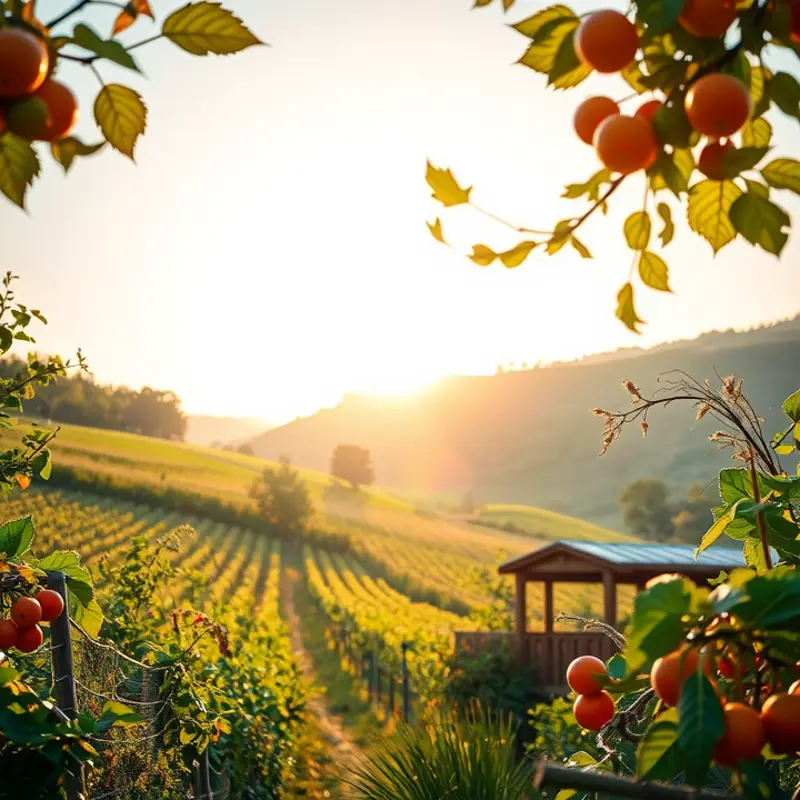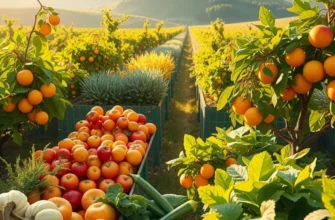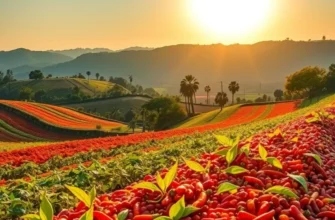Throughout history, culinary trade goods have not only enriched the palate but also forged connections between distant cultures. Spices, fruits, and grains traveled vast distances, creating unique food traditions around the globe. This journey into the world of culinary trade unveils how these items influenced societies, shaped cuisines, and sparked cultural exchanges that continue to impact our meals today.
The Spice Routes: Flavors that Transformed Empires

Spices have been coveted treasures since antiquity, often worth more than gold. They were the subtle agents of change that transformed simple dishes into feasts and drove empires to expand their horizons, both politically and geographically. Among the most sought-after were black pepper from the Malabar Coast, cinnamon from Ceylon, nutmeg from the Bandas, and saffron—each offering its own unique taste and aroma that changed the palates of entire civilizations.
The ancient spice routes were the arteries of global trade, connecting the orient with the occident. These routes spiraled through inhospitable terrains—dense jungles, desolate deserts, and raging seas. The Silk Road, a crucial network of trade pathways, enabled the exchange of exotic spices from Asia to the borders of Europe. Traders ventured along these routes, braving perilous journeys for the treasures of flavor.
The allure of spices prompted some of the first exploratory expeditions. Christopher Columbus, seeking a western sea route to India, instead stumbled upon the Americas. Vasco da Gama circumnavigated the Cape of Good Hope to reach the spice-laden shores of India, forever altering the course of maritime trade. These explorations not only captured the imaginations of empires but also knitted the world closer through commerce.
Cultural interplay was inevitable as merchants traveled far and wide. Spices functioned as culinary ambassadors, introducing new flavors and cooking techniques to distant lands. In medieval Europe, spices were used to create palatable dishes from gamey meats and to add warmth to hearty stews. They became symbols of hospitality and wealth, influencing culinary practices and social norms.
Beyond their culinary use, spices also served medicinal purposes. Ayurvedic and traditional Chinese medicine systems heavily relied on spices like turmeric and ginger for their health benefits. Medieval European texts reverberate with references to nutmeg and cloves used to preserve health and fight ailments. This knowledge flowed along the trade routes, enriching local practices.
The fervor for spices irrevocably altered the power dynamics of empires. The spice trade led to the establishment of colonial footholds and influenced political strategies aiming for dominance in spice-producing regions. The Dutch, by capturing the Maluku Islands, clinched the nutmeg trade; the British East India Company followed, seeking its share of the lucrative spice pie.
The legacy of these intertwined routes and the global spice trade manifests vividly in today’s kitchens. Spices continue to be central ingredients, enhancing the aroma and flavor of cuisines worldwide. Understanding their historical importance provides insight into culinary influences that reflect centuries of trade and cultural exchange. This journey of flavors underscores how interconnected our culinary traditions truly are, reminding us that our meals are, in essence, a tapestry of history and cross-cultural dialogue.
Fruits of the World: The Sweet Connectors of Cultures

Within the vibrant mosaic of global trade, fruits have played a pivotal role in connecting distant continents and integrating diverse cultures. Their lush flavors and captivating aromas have left an indelible mark on culinary practices, becoming a testament to the harmonious blend of nature and culture.
Citrus fruits, for instance, journeyed from Southeast Asia to blend into the essence of Mediterranean cuisine. The acidic jolt of a lemon or the juicy burst of an orange became indispensable in dishes from Greek avgolemono soup to Spanish tapas. Such integration underscores the pivotal role citrus played in enhancing flavors and preserving food before modern refrigeration. In areas marked by arid climates, citrus orchards became not just agricultural staples but cultural icons, their growth patterns influencing the very fabric of local societies.
Meanwhile, tropical fruits like mangoes painted a sweet evolution across global kitchens. Originating in South Asia, mangoes traveled with traders and explorers, weaving their way into the culinary traditions of Africa and the Americas. In India, a ripe mango’s honeyed taste became synonymous with summer, giving rise to both simple roadside mango stalls and elaborate desserts like creamy mango lassi.
In Central and South America, exotic fruits such as avocados and pineapples became cornerstones. Avocados, native to the region, were revered by ancient civilizations like the Aztecs for their rich, buttery texture and nutritional value. As explorers brought back tales of these “alligator pears,” avocados carved their niche within global cuisine, ultimately leading to the now ubiquitous spread of guacamole.
The story of fruit trade reflects broader human patterns of movement, exchange, and adaptation. Early sailors and traders recognized fruits not only as commodities to barter but as sources of sustenance, rich in vitamin C and capable of warding off scurvy during long sea voyages. Learn more about culinary influences trading adaptable ingredients here.
As globalization intensified, so too did the mingling of fruits within regional cuisines. Consider the passion fruit’s journey, originating in Brazil and branching out to flavor Chinese teas and Australian cocktails. Passion fruit’s tart yet sweet essence has turned it into a versatile ingredient, adored for both its culinary and ornamental possibilities.
Moreover, the interactions surrounding fruit have transcended mere taste. They encapsulate exchanges of cultivation techniques, preservation methods, and shared knowledge across generations and national borders. In places like the Caribbean, fruit festivals celebrate such diversity, turning the bounty of local produce into symbols of cultural identity and resilience.
In the tapestry of global cuisines, fruits act as threads that weave stories of exploration, adaptation, and shared joy. Whether as the shining star of a simple dish or as a subtle note enriching a complex recipe, fruits remain potent symbols of humanity’s enduring curiosity and interconnectedness.
Final words
The exploration of historical culinary trade goods reveals a rich tapestry of flavors and traditions that have influenced cuisines worldwide. Spices, fruits, and grains served as bridges between cultures, creating connections that transcended geographic barriers. As food enthusiasts, we can cherish these colorful histories and embrace the continued exchange of flavors in our modern kitchens. Understanding where our favorite ingredients come from adds depth to our culinary experiences, allowing us to appreciate the cultural stories each bite tells. Let this knowledge inspire your next meal, echoing the ancient trade routes that shaped culinary landscapes.








